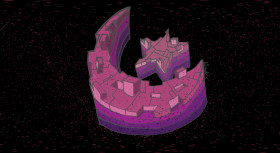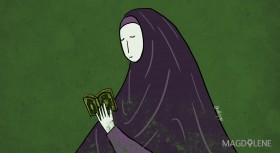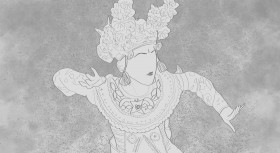Like most people, I would say that my childhood days were among the happiest of my life. There were no financial or social pressures, I got all the attention, and the only stressful time was when I didn’t know whether or not I would get the toys I wanted on my birthday. Raised in a middle class family, I was lucky – my parents could buy me almost anything I wanted for birthdays. Food and health were a non-issue, and I could watch my favorite cartoons on TV.
As my parents could afford cable TV, I grew up on a staple of cartoons from Disney Channel, Cartoon Network and Nickelodeon. The cartoons gave me my first English lessons, helping me learn new words and practice conversation skills. I also learned a lot of life lessons from my favorite cartoons. Hey Arnold! and Dexter’s Laboratory taught me how to cope with school madness. Cartoon was one of the best parts of my life then.
Cartoon is definitely one of the best entertainments a kid can have. It is also arguably the most effective medium to educate children. It introduces children to what life is like and how things work in a way that is accessible to them. When properly done, it offers important knowledge and information. It also shapes children’s perspective. And, yes, cartoon could be a perfect platform to educate children about gender.
The mass media has been an influential instrument in spreading the creation, representation, indoctrination and internalization of certain values in modern society. Sadly, the media has also been used as a massive propaganda machine to internalize patriarchal values. Children mostly learn about gender roles, identities and values from the media. And, unfortunately, as one of the most common media for children to learn about life and societal values, most cartoons are very gender-biased.
In Indonesia, cartoons are usually aired on Sunday morning by some national TV stations. There are probably as many cartoons in national channels nowadays as there were back in my childhood days, but the number of cartoons with heroine or female as the lead role in them remains small. Cartoons like Crayon Shinchan, Doraemon, Dragon Ball, Avatar: The Legend of Aang, Spongebob Squarepants or even Larvan – all have boys or men as the lead role.
The representation of gender roles in cartoons is clearly based on traditional gender roles. Boys have to be brave and get to be the heroes; girls should be pretty and are usually weak. Fighting or pursuing a successful career is a man’s job, while child rearing and domestic chores are a woman’s job. Women and girls are more likely recognized for being attractive and they are often portrayed sexually in mass media, half naked or wearing revealing clothes. The same attitude prevails in cartoons.
Remember how perverted Crayon Shincan is, with his deep and “om senang” (philandering middle-aged men) tone of voice, and how the cartoon always explicitly shows women in bikinis or sexy costumes to sexually excite Shincan? The more revealing the clothes, the more desirable they would be. So much for a children’s cartoon, eh?
This is not to say that there are no cartoons with heroines or female lead roles. Powerpuff Girls, the heroines in Ghibli’s movies (Nausicaa, Princess Mononoke, and even Ponyo), those super girls in kawaii uniforms in many Japanese animes (Sailor Moon for one). From Disney, we have Mulan and Elsa from Frozen. Closer to Indonesia, there are Masha and Kak Ros from Upin & Ipin, the Malaysian animation that is wildly popular in Indonesia.
I am happy that these cartoons exist and I love the fact that their creators were aware of female characters’ needs and skills. Women and girls can be appreciated for their intelligence and strength, not just their looks. They can be leaders or do something more with their lives than what the social construct dictate. But are there enough cartoon heroines out there?
Gender disparity in cartoons, kids or family movies is a serious issue. Stacy L. Smith, PhD, Marc Choueiti and Dr. Katherine Pieper conducted a study about Gender Disparity On Screen and Behind the Camera in Family Films, which looks at gender disparity issues in the top 122 grossing domestic family films rated G, PG and PG-13 from 2006-2009.
The study found that of the 5,554 speaking characters studied: 71 percent were male, and the remaining 29 percent were female. So, statistically, there are only 2.42 male characters for every one female character. Moreover, only 23.3 percent of the lead roles in the films were girls or women.
Why should this be an alarming issue for everyone?
Education of gender in early childhood is important and, as I stated before, cartoon can be an effective media to educate young people. On the other hand, the internalization and indoctrination of patriarchal values in cartoon or films for children amount to harmful propaganda.
The fewer number of female roles in mass media, the less people will value the role of women and girls in real life. Having female characters relegated to less important roles in cartoons can affect children’s perspective about the value of women in society. They will see women and girls as unimportant, weak or the “second gender”. This kind of bias in cartoons may be subtle, but it would nourish more biases and judgments that come from patriarchal values in a child’s life.
That’s why having more female lead roles in cartoon and other mass media for children and encouraging filmmakers and animators to make more feminist themed cartoons is one of the best way to counter patriarchy that is deeply ingrained in the media. It can educate children that women can have equal roles and skills as men in the world. Yes, it’s a fictional world, but by re-conceptualizing this fictional world, we can also re-conceptualize the real world and shaping the right gender literacy to our children.
Hayao Miyazaki, the founder of Studio Ghibli Animations, which has produced so many animation with heroines said: “Many of my movies have strong female leads – brave, self-sufficient girls that don't think twice about fighting for what they believe in with all their heart. They'll need a friend, or a supporter, but never a savior. Any woman is just as capable of being a hero as any man."
Another important initiative is to encourage more women to be involved in film or animation making. The study on gender disparity on screen has shown that films with a female director or writer have significantly more girls and women on screen than those without a female director or writer attached.
The media matters and cartoon matters, because it is the closest thing to getting children’s full and undivided attention. As Geena Davis once said, “Kids need to see entertainment where females are valued as much as males.”
Aulia A. Dhianti is a Criminology student at Universitas Indonesia. Her life is basically a constant battle between how(s) and why(s). Find her on twitter @27Aulia to talk about food, comic and cat.








Comments